I am 35 years old this year, and I started trading coins at 26. From 2020 to 2022, my funds reached eight figures. My current lifestyle requires me to go out to high-end hotels of around 2000 yuan, and my suitcase and hat may have crypto-related symbols. It is much more comfortable than what the older generation experienced in industry or the 80s in e-commerce. Today, I will share a few practical tips; this experience is worth 60 million, and I hope it can help you.
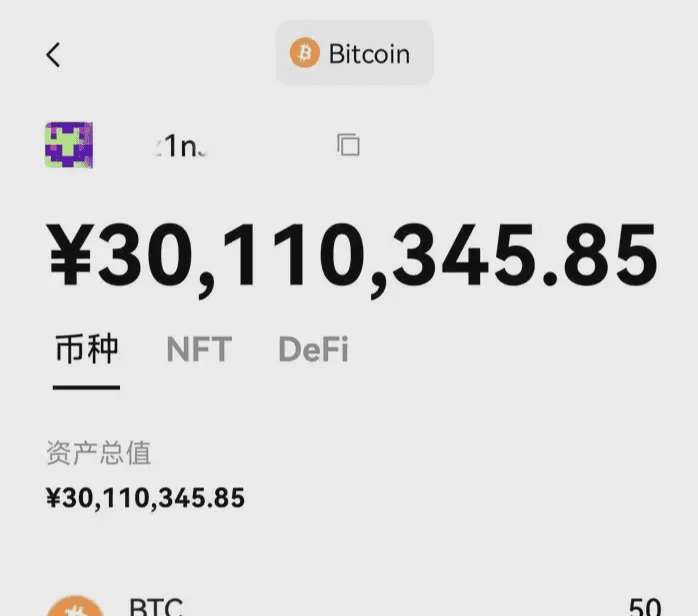
1. In most cases, Bitcoin is the leader of price fluctuations in the crypto world. Strong coins like Ethereum may sometimes deviate from Bitcoin's influence to form a unilateral market. Altcoins generally cannot escape its influence.
2. Bitcoin and USDT move in opposite directions; if you notice USDT is rising, be cautious that Bitcoin may drop; when Bitcoin is rising, it is a suitable time to buy USDT.
3. The period between 12 AM and 1 AM is prone to spike phenomena, so domestic crypto friends can set a low buy price and a high sell price for their favorite coins before sleeping. You might just make a deal while lying down.
4. Every morning between 6 AM and 8 AM is a time to judge buying or selling, as well as to determine the day's rise and fall. If it has been falling from midnight to 6 AM, and continues to fall during this period, it is a buying or averaging opportunity, and it will likely rise that day. If it has been rising from midnight to 6 AM, and continues to rise, it is a selling opportunity, and it will likely fall that day.
5. 5 PM is an important time point of attention in the community; due to time zone differences, American crypto friends are waking up to work, which may cause fluctuations in coin prices. Some significant rises or falls have indeed occurred at this time, so be especially alert.
6. There is a saying of 'Black Friday' in the crypto world, as there have been several instances of significant drops on Fridays. However, there have also been significant rises or sideways movements; it is not particularly accurate, just pay attention to the news.
7. For coins with a certain trading volume guarantee, if the price drops, there is no need to worry. Patiently hold, and it will definitely return to the original price, whether in 3 or 4 days, or a month. If you have surplus USDT, average down to bring the price down, and it will return faster. If you have no spare cash, just wait; you won't be disappointed, unless you really bought an I coin.
8. Trading the same coin in spot markets with a long-term hold yields better returns than frequent trading, depending on whether you have the patience to hold. I bought Dogecoin at 0.1 and have seen it increase more than 20 times while playing around in the crypto world.
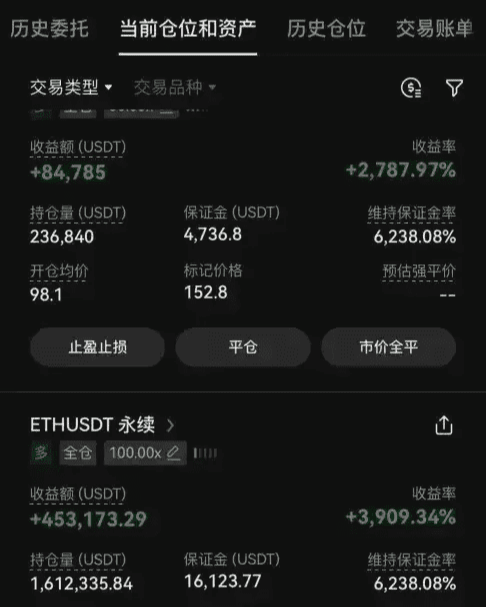
Today, I will share a few practical tips; this experience is worth 60 million, and I hope it can help you.
1. Choose the right platform: Avoid 'eating client losses'
Preferred platforms for trading: Binance, OKX (low fees, good depth, no lag), avoid small platforms (in 2023, a certain platform maliciously spiked, leading to collective liquidation of users).
Key Indicators: Check 'Capital Volume' (over 1 billion USD), 'Number of Positions' (over 500,000), 'Historical Spike Records' (the fewer, the better).
2. Position Control: Use the '1% Rule'
Protect your capital. For a single position: do not exceed 1% of total funds for each opening position (e.g., with 100,000 capital, do not exceed 1,000 yuan in margin for a single position).
Total Position Limit: All contract positions should not exceed 20% of total funds (to avoid simultaneous liquidation of long and short positions).
Example: With a capital of 10,000 yuan and 10x leverage, the margin for a single opening position should be ≤100 yuan (corresponding to a value of 1,000 yuan in contracts), and the total margin should be ≤2,000 yuan.
3. Technical Analysis: 3 Must-see Indicators to Help You Determine Direction. MA Moving Average: If the 50-day moving average crosses above the 100-day moving average (Golden Cross), it is bullish; if it crosses below (Death Cross), it is bearish.
MACD: Red bars lengthening (bullish strength), green bars lengthening (bearish strength), divergence signals (price rising while bars shrink, possibly peaking).
Support and Resistance Levels: Check previous highs and lows (for example, Bitcoin's 32,000 is strong support, and 40,000 is strong resistance), and open positions in the direction of the breakthrough.
4. Order Placement Techniques: Catch the golden opportunities of 'sharp falls and sharp rises'. If the coin price falls over 5% and touches a strong support level (for example, Bitcoin fell to 28,000 in May 2025, rebounding by 2% within 30 minutes, a long position can earn 20%).
Surge and Short: If the price of the coin rises more than 10% in a short time and reaches a resistance level (for example, if Bitcoin fails to reach 45,000 and quickly falls back, open a short position to earn 15% within an hour).
Taboo: Do not open positions during sideways fluctuations (70% of the time in fluctuations; frequent operations will definitely incur losses).
5. Closing Strategy: The money earned is the real money. Set a target for closing: immediately take profit when the preset return (e.g., 20%) is achieved, do not be greedy.
Stop-loss liquidation: If the price falls below a support level or rises above a resistance level, stop loss unconditionally (e.g., after opening a long position, if the coin price falls below the previous low, run immediately, don't gamble on a rebound).
Time Stop Loss: If the position has not met expectations after 4 hours, forcibly close the position (to avoid staying up late watching the market; 2023 statistics show that users who held positions for over 12 hours had a liquidation rate tripled).
3 Core Concepts Every Beginner Must Learn: Understand these 3 points to avoid losing 80% of your capital!
1. Leverage: Not a double-edged sword, but rather a 'dragon-slaying knife'. Commonly used leverage: 10x (low risk), 50x (medium), 100x (for experts).
Deadly Misconception: 100x leverage ≠ earning 100 times; rather, it means 'a 1% fluctuation results in a 100% loss of capital' (e.g., with 100x leverage, using 10,000 capital to buy 1 million assets, a 1% drop means losing 10,000, resulting in liquidation).
Iron Rule: Beginners should only use 10-20x leverage, while experienced traders should not exceed 50x (2023 statistics: 99% of users using 100x leverage went bankrupt within 3 months).
2. Stop-loss and Take-profit: The 'life-saving talisman' more important than making money. Stop-loss: Set in advance 'how much loss necessitates exiting' (e.g., with 10,000 capital, set stop-loss at 5%, lose 500 yuan to automatically close position to avoid liquidation).
Take Profit: Automatically secure profits after reaching target returns (e.g., anticipate earning 20%, sell off after profiting 2000 yuan to avoid reversal losses).
Real case: In 2024, Bitcoin crashed by 30%. Users who set a stop loss at 10% only lost 10% of their capital, while those who did not set a stop loss directly went bankrupt.
3. Funding Rate: The 'hidden mechanism' principle of earning money from opposing positions: When long and short positions are imbalanced (for example, 80% of users are long), the platform will require long users to pay funding fees to short users, and vice versa.
Practical Tips: In extreme market conditions (such as Bitcoin breaking through key resistance levels), open a small reverse position to earn funding fees, which can yield 0.1%-1% daily profit (data from a platform in 2025: users who consistently earn funding fees have stable annualized returns of 15%+).
3 Advanced Strategies Used by Experts
1. Hedging Strategy: A 'winning formula' that makes money whether the market rises or falls. Operation: Simultaneously open a 10x long position and a 10x short position (each occupying 5% of the total position). If the coin price fluctuates over 2%, close the losing position and hold the profitable one.
Case Study: Bitcoin oscillates between the 30,000 - 40,000 range, using a hedging strategy to earn 5%-10% monthly, with risks close to zero.
2. Laddered Positioning: 'Bottom-fishing tool' in sharp declines. Steps: If the coin price drops 10%, open a 1% long position; if it drops another 10%, open a 2% position; if it drops another 10%, open a 3% position, and so on. Advantage: Lowers average cost, and a 15% rebound will turn losses into profits (e.g., if you open a long at 30,000 and it drops to 24,000, the total position is 6%, and rebounding to 27,600 will break even).
3. Capital Management: Use 'Liquidation Price Calculator' as a life-saving tool: Enter margin, leverage, and position size in the exchange app to automatically calculate the liquidation price (e.g., 10x leverage, 10,000 yuan margin, liquidation price = opening price - opening price × 10%).
Iron Rule 4: Ensure the liquidation price is at least 20% away from the current market price (e.g., if Bitcoin is at 30,000 and you open a long position, set the liquidation price at 24,000, leaving a buffer space).
Contracts are not ATMs but rather a battlefield for 'cognitive monetization'!
1. Practice with a simulated account: Use 10,000 yuan of virtual funds to practice for 3 months. Recommended platform: Binance 'Contract Simulation Account', which replicates real trading 1:1; if you lose everything, it can be reset.
Goal: Achieve 'no liquidation within 3 months, win rate over 50%' before entering real trading.
2. Always remember: Contracts are 'the icing on the cake', not 'a gamble for a comeback'
Correct Mindset: Play contracts with no more than 20% of spare cash; your main income is essential (for a salaried worker earning 3,000 a month, using 600 yuan to play contracts is sufficient, do not stake your entire fortune).
3. Liquidation is not the end but the beginning of growth. Every liquidation is the best teacher: record the reasons for liquidation (is it due to high leverage? No stop loss? Or emotional trading?), and form your own 'pitfall guide'.
Today, I will share a summary of my years of trading experience for free, hoping it can help everyone!
If you want to change your destiny, you must try the crypto world. If you can't make money in this circle, ordinary people will have no opportunities in their lifetime.
I believe that an excellent trader must be patient to endure prosperity!
Regularly taking small profits indicates that one's ability to judge the market is limited and cannot accurately predict price fluctuations. A good solution is to improve your trading skills for better judgment and analysis of investment targets.
Next, I will share some trading experiences that I hope can help investors in need:
I. Choose familiar coins, and do not focus on too many varieties. Understand the relationship between price changes to better grasp the price trend direction. As for focusing on varieties, do not overdo it, as it is a consideration from the investor's perspective. Human energy is limited; it is impossible to profit from different varieties, do not challenge the limits.
II. The importance of position management. If not managed properly, all capital may be lost with no chance of recovery. It is recommended that the margin of the positions occupy around 30% of the capital, not exceeding 50%. Of course, when favorable market conditions arise, it is possible to increase positions appropriately. During trading, keep two points in mind: do not add positions when in floating profit; do not add positions when in floating loss. Learning to wait is a required course in trading.
III. Develop a trading plan, don't trade frequently. Frequent trading consumes a lot of energy, and the trading cost will be relatively high. Finding profitable opportunities in uncertain markets is not easy, and if the results are not good, it will not only consume capital but also affect oneself.
IV. Maintain a good mindset while trading, strengthen learning, summarize more, and exercise more.
V. Set take profit and stop-loss levels; make money and exit in time; do not hold onto losing positions. The main reason for losses is often due to holding onto positions.
Technical Knowledge
1. Introduction to Bollinger Bands Indicator and Practical Insights 2. Dow Theory 3. Revelation of Main Force Chip Distribution 4. Introduction to KDJ Indicator and Practical Insights 5. Elliott Wave Theory 6. What are Resistance and Support? 7. What is Trend and How to Judge? 8. Random Index, Random Index 9. How to Apply Fibonacci? …
Basic Knowledge
1. What are cryptocurrency futures contracts?
(1) Definition of futures contracts
(2) Types of contracts
(3) Three key elements of futures contracts
2. What is leverage in cryptocurrency trading?
(1) What is leverage?
(2) Examples of leverage trading
3. What is the principle of hedging and reducing risk?
(1) What is hedging?
(2) What to do if you're stuck buying at a high in the crypto world?
(3) How to hedge in the cryptocurrency market?
4. Key points to note in contract trading
(1) How to allocate positions?
(2) Where should the take profit and stop-loss positions be set?
II. Supply and Demand Trading Method: Find Key Intervals
Supply and demand relationships are the same in any market: when supply and demand become unbalanced, prices will move or reverse. The supply area corresponds to the retail price where professional traders short, while the demand zone corresponds to the wholesale price where professional traders buy.
The demand zone generally has two forms of performance
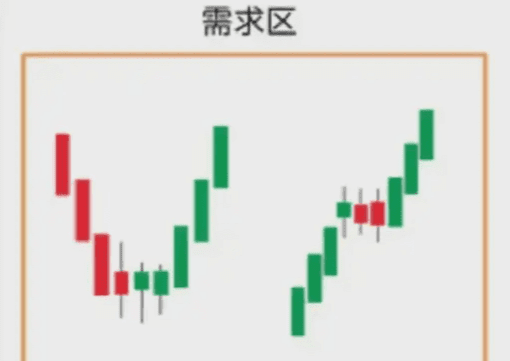
Type 1: Downtrend, enter zone, uptrend
Type 2: Uptrend, enter zone, uptrend
Similarly, the supply zone also has two forms of performance:
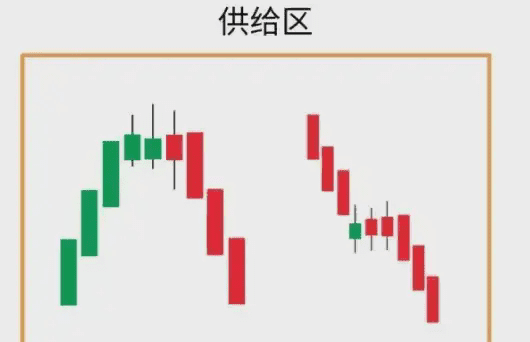
Type 1: Uptrend, enter zone, downtrend;
Type 2: Downtrend, enter zone, downtrend
So when we see the demand zone, what should we do?
In the market, when a demand zone appears, we expect the price to rise here. Buy when it pulls back to the demand zone.
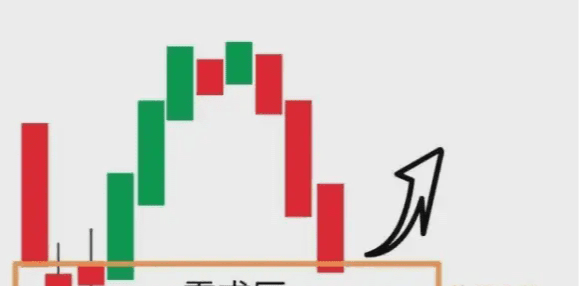
The supply zone is the opposite of the demand zone. We expect the price to fall here, and we sell when the price pulls back to the demand zone.
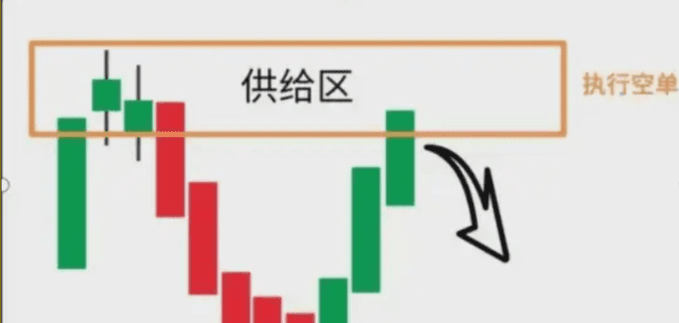
In simple terms, when the price rises and stabilizes, you need to set up long positions; when the price stabilizes and falls, you need to set up short positions.
Let me give you an example; the most typical example I can use is from the time of May 19!
At that time, it was a very good entry point, and shortly after this demand zone formed, the price returned to the demand zone multiple times (i.e., at that 30,000 USD position), making this demand zone very likely a good trading opportunity.
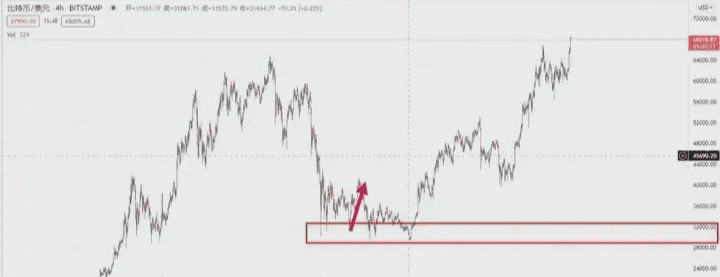
If the price continues to fall after the first pullback, we will see a surge in the demand zone. Reflecting on the market at that time, after the second drop below 30,000 USD after May 19, there was a good rebound. As we have already discussed, similar to the principle with the supply zone, if institutions still have unexecuted long contracts in the demand zone, they will quickly pull the price back into the area.
III. Fibonacci Method for Finding Positions
Fibonacci retracement is the most commonly used method for finding support and resistance levels in trading.
Generally, we will pull from the highest price point during a certain time period to the relatively lowest price point. The 9 lines (segments) formed at this time are the pullback levels we need to pay attention to. Each line has a certain support or resistance effect related to the position of the market.
(1) Patience to hold for a breakout
Short cycle Fibonacci retracement lines drawn on 1-4 hour charts can be purchased at the 0.236 position, which is relatively safe. It will definitely test the 0.382 position; at that time, you need to exit to prevent a pullback!
(2) High short and low long profit
Using Fibonacci retracement lines on daily charts, you can engage in high short and low long at the 0.236-0.382 positions, which can yield decent short-term profits.
(3) Be cautious when extracting teeth from a tiger's mouth
Be especially careful in the 0.382-0.618 area, as there are many possibilities for a trend reversal; try to avoid using small cycles.
(4) High position breakthroughs must retrace
At the 0.618 position, a pullback will surely occur, so entering at this point generally results in good profits!
Examples of Fibonacci retracement lines are not easy to illustrate, and drawing lines should not be confined to one time frame; instead, use multiple time frames and cycles to find high and low points, so I won't draw them. However, it is worth noting that this is still quite useful, and it can also be used for short-term trades in spot markets, buying at support levels and selling at resistance levels.
That's about it. Contracts are gambling, but many people still cannot resist the temptation of getting rich overnight. This article is not to discourage you from trading cryptocurrency contracts but to encourage you to trade them reasonably. Therefore, I hope this content can help everyone.



